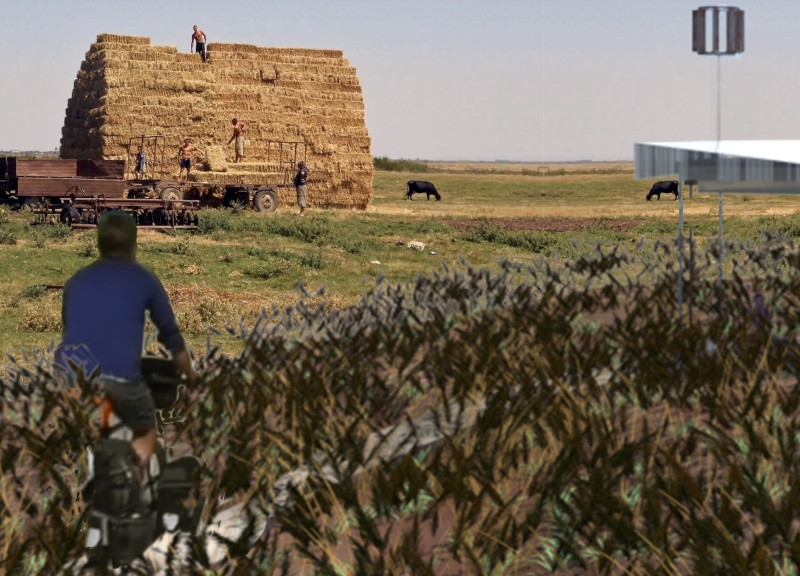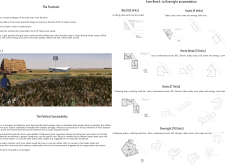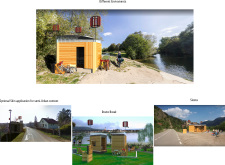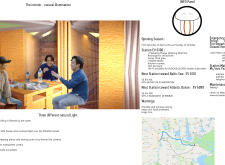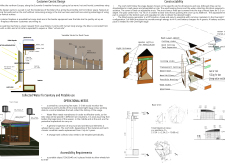5 key facts about this project
The Fountain project serves as a dedicated stop for cyclists, providing essential amenities such as hydration, rest areas, and space for community interaction. Located in an accessible area, the design is inspired by the concept of a fountain, which symbolizes refreshment and social gathering. The aim is to create a functional space that not only meets the practical needs of cyclists but also fosters a sense of connection among users.
Design Concept and Functionality
The project is developed in several stages, each one expanding upon the previous to enhance user amenities. The first stage focuses on addressing basic needs, such as gathering water and generating energy through a wind generator. This setup ensures a renewable power source is available even when the stop is closed. Additionally, a water storage tank provides a continuous supply for hydration.
Accommodations for Cyclists
In the next phase, the design introduces important features like maintenance tools, restrooms, showers, and bike racks. These additions aim to deliver comfort and convenience for cyclists during their journeys. Common areas with benches and snack stations encourage users to take a break and engage with one another. As development progresses, subsequent stages include options for overnight stays and laundry facilities, further enhancing the utility of the stop.
Community and Sustainability
A significant aspect of the project is its commitment to sustainability and local engagement. The design encourages the use of materials sourced from the surrounding area, supporting local craftsmanship. This approach not only maintains the project's architectural presence but also contributes to the local economy. The roof design is flexible, allowing it to adapt to various weather conditions while promoting environmental responsibility.
Accessibility and User Experience
Accessibility features are carefully considered to ensure that all cyclists can benefit from the facilities. This includes portable slopes for individuals with mobility challenges. The design maximizes natural light and airflow, thereby promoting energy efficiency and reducing dependence on artificial climate control. Well-defined indoor and outdoor spaces also facilitate social interactions, making the bike stop a welcoming place for cyclists to gather.
Attention to detail is evident in aspects like the use of curtains to separate sleeping areas from communal spaces. This enhances privacy while still encouraging a social atmosphere.


